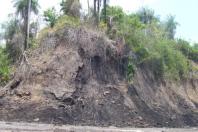Mongolia explores oil shale for energy security
Mongolia explores oil shale for energy security
By Paulius Kuncinas
Regional Editor, Oxford Business Group
UB Post
Extensive oil shale reserves could reduce Mongolia’s dependence on imported energy, but there is some uncertainty over whether its deposits are commercially viable.
Mongolia imports around 90 percent of its oil needs, with the majority coming from Russia. This imposes a high cost on the economy – the IMF estimates the fuel bill will rise to nearly 1.48 billion USD by 2016, up from 110 million USD in 2000 – and supply disruptions are a concern. The lack of fuel security, as much as the direct cost of imports, is one of the driving forces behind the government’s support for the development of local energy capacity.
The country has a domestic oil industry but output is limited. Around 18,000 barrels per day (bpd) are extracted, almost all of which is exported for processing. With conventional oil reserves at around 2.4 billion barrels, Mongolia does not lack oil, but efforts to tap these deposits have been hampered, as many of them are in difficult-to-access regions and may be too costly to develop.
However, with demand for oil-based products already high and rising as the economy expands, a domestic solution is desirable. Forecasts estimate annual consumption will jump to 3.5 million tons by the end of the decade, more than four times the 800,000 tons consumed in 2012. Quite apart from the direct cost of purchasing the oil, an increase in imports would likely require new infrastructure such as pipelines and better roads for tankers.
New findings released
To reduce these costs and dependency on foreign sources, Mongolia has been looking to bridge its energy deficit with non-conventional means. One of the options is oil shale, a sedimentary rock from which oil can be extracted. In early December, the Mining Ministry issued a statement announcing initial surveys had identified oil shale reserves of more than 700 billion tons.
According to the report, more than 60 deposits have been located in a number of regions across the country, including Tuv, Uvurkhangai, Dundgobi and Umnugobi. The total of reserves given by the ministry is somewhat less than the 800 billion tons that had been estimated previously, though the latest figure is preliminary and will likely be subject to revision.
If there is an upward adjustment, it could come as the result of work being conducted by US-based firm Genie Energy, which in late April signed an agreement with the Petroleum Authority of Mongolia to explore and assess the commercial potential of oil shale resources in a nearly 35,000-sq-km area in central Mongolia.
According to the terms of the deal, the company’s local subsidiary, Genie Oil Shale Mongolia, will work over a five-year period to determine whether the country’s oil shale deposits are commercially viable. If so, Genie – which has similar operations in the US and Israel – could then move towards developing these resources for production.
After the agreement with Genie was struck, Deputy Minister of Mining O. Erdenebulgan said the government looked upon developing the country’s oil shale reserves into a viable source of energy as “a strategic priority.”
Possible downside
However, the strategy could come at a price. Oil shale is more costly to extract and process than conventional oil, and does not generate the same energy levels when burned. Extensive infrastructure investments would be required all along the production chain, from extraction, transportation and processing. Some estimates have put the cost of developing a fully functional oil shale capacity at around four billion USD.
Critics of the oil shale industry add that the extraction process can cause environmental damage and uses large amounts of water. However, the government has said any extraction and processing activity would be conducted in an environmentally sensitive manner. If proved viable, production of fuel and other oil-based products from oil shale could begin as early as 2018.
Developing Mongolia’s oil shale potential is not the only unconventional road towards energy self-sufficiency the country is exploring. In August, plans were announced for a South Korean-Mongolian joint venture to invest two billion USD in a coal-to-liquids plant in the Baganuur District of the Ulaanbaatar region. Though oil shale or coal-to-liquids may not prove as cost effective as conventional oil, Mongolia may well be prepared to pay the price to provide a degree of energy security.
http://ubpost.mongolnews.mn/?p=7746


